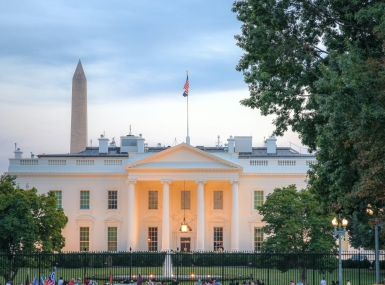Broadband data disparities take center stage in 116th Congress
Upcoming Events
Related News

Key Takeaways
Connectivity issues continue to plague counties across the United States. According to the Federal Communications Commission (FCC), approximately 19 million Americans — 6 percent of the population — lack access to even basic broadband services. Connectivity is imperative for economic competitiveness in the 21st century. From e-commerce and the gig economy to distance learning and tele-health facilities — county residents’ daily lives are increasingly reliant on a certain level of connectivity. As demand for access to affordable high-speed internet grows, economic opportunities for the unconnected continue to slip away. Counties lacking access to even basic broadband infrastructure are at a competitive disadvantage, exacerbating the economic divide between rural and urban areas.
Do More
The U.S. House Energy and Commerce Subcommittee on Communications and Technology recently held a hearing titled “Accountability and Oversight of the Federal Communications Commission.”
The hearing featured testimony from all five commissioners of the FCC, who took questions from members of Congress on a number of FCC activities. Two major county priorities were discussed throughout the hearing: Expanding rural broadband and correcting the FCC’s broadband coverage maps.
During testimony, FCC Chairman Ajit Pai discussed actions the Commission is taking to close the digital divide. Specifically, Pai outlined his proposal to spend more than $20.4 billion over 10 years to build and improve rural broadband networks. Pai called the initiative the Rural Digital Opportunity Fund, which would replace the Connect America Fund program (set to expire in early 2020).
The hearing also underscored the growing bipartisan concern over inaccuracies with FCC’s national broadband maps. Because these maps help the federal government make important broadband spending decisions, inaccurate and incomplete data shared by service providers causes Congress and the FCC to overlook the true demand for basic broadband infrastructure.
FCC commissioners acknowledged the data discrepancies during the hearing and discussed proposed actions to address the issue, including a new data collection and challenge process for mobile broadband coverage. Pai also highlighted a top-to-bottom review of the Form 477 process to ensure that broadband data was more accurate, granular and useful to the Commission and the public.
However, several members of the committee shared their frustration with the timeline for correcting the data collection process and emphasized the need to collect new data from independent parties and consumers rather than service providers.
This urgency, however, is not limited to members of the House Energy and Commerce Committee. Several bipartisan bills have been introduced in the 116th Congress specifically addressing the failures of the FCC maps:
Improving Broadband Mapping Accuracy Act (S. 842): Introduced by Senators Amy Klobuchar (D-Minn.), Shelley Moore Capito (R-W.V.), Joe Manchin (D-W.Va.) and John Hoeven (R-N.D.), this bill would direct the FCC to initiate a rulemaking to establish a process for using data reported by consumers and state, local and tribal government entities verifying coverage data reported by service providers.
Broadband Data Improvement Act of 2019: Introduced by Senators Shelley Moore Capito (R-W.Va.), Brian Schatz (D-Hawai‘i), Jerry Moran (R-Kan.) and Jon Tester (D-Mont.), this bill would require broadband providers to report service availability through GIS shapefiles, rather than larger census block level data. The GIS shapefiles would replace the current Form 477 process and provide a more accurate picture of connectivity at ground level. Additionally, this bill would establish a streamlined data validation process.
Save the Internet Act of 2019 (H.R. 1644): The Save the Internet Act of 2019 recently passed the U.S. House of Representatives (232-190). Included in this package is an amendment written by Rep. Abigail Spanberger (D-Va.) that would require the Government Accountability Office (GAO) to examine the accuracy of the FCC’s broadband mapping. Additionally, the GAO report would provide recommendations on how the FCC could produce more accurate maps.
Broadband Mapping After Public Scrutiny (MAPS) Act (H.R. 2643): Introduced by Representatives Bob Latta (R-Ohio) and Peter Welch (D-Vt.), this bill would require the FCC to establish rules for data submitted to the FCC by private entities and state, local and tribal government entities to verify fixed and mobile broadband service coverage data reported to the FCC by fixed and mobile broadband service providers.
In October 2018, NACo began work on an initiative aimed at addressing the FCC’s data disparities through a crowdsourcing platform. Partnering with the Local Initiatives Support Corporation, the Rural Community Assistance Partnership, the National Association of Development Organizations and Farm Credit, NACo released “TestIT” — a mobile app designed to identify areas with little or no connectivity. With TestIT, users can report their broadband speeds from anywhere with a simple click of a button. The data collected through this app will help identify areas where broadband service is overstated and underfunded by comparing the data to the FCC’s National Broadband Map.
As NACo continues to work with Congress and the administration to bridge the digital divide, county leaders and constituents alike are encouraged to download the TestIT app and help shed light on the true state of connectivity in America. The app is free and available for both iOS and Android devices.

Attachments
Related News

White House signs Executive Order on state AI lawmaking
President Trump signed an Executive Order (EO) aimed at mobilizing federal agencies to challenge existing state laws on artificial intelligence.

Congress Considers Bills to Reauthorize State and Local Cybersecurity Grant Program
Congress is considering two bills to reauthorize the State and Local Cybersecurity Program

County Countdown – Dec. 1, 2025
Every other week, NACo's County Countdown reviews top federal policy advocacy items with an eye towards counties and the intergovernmental partnership.